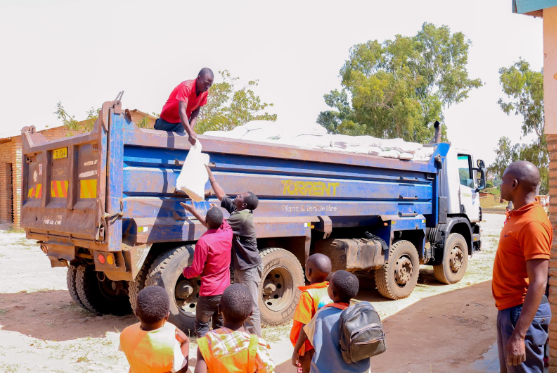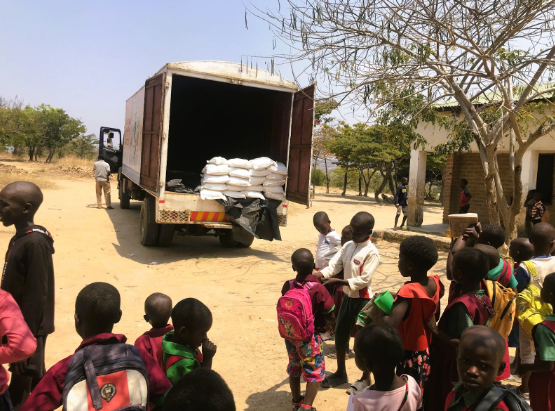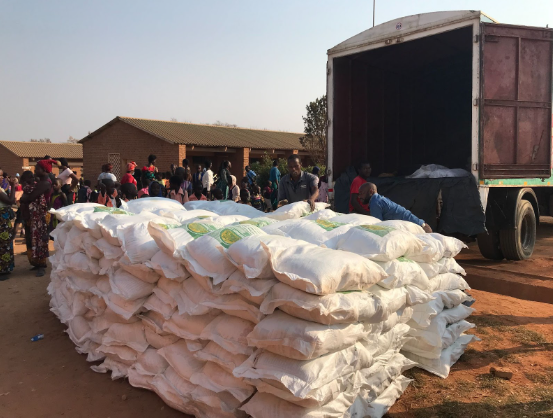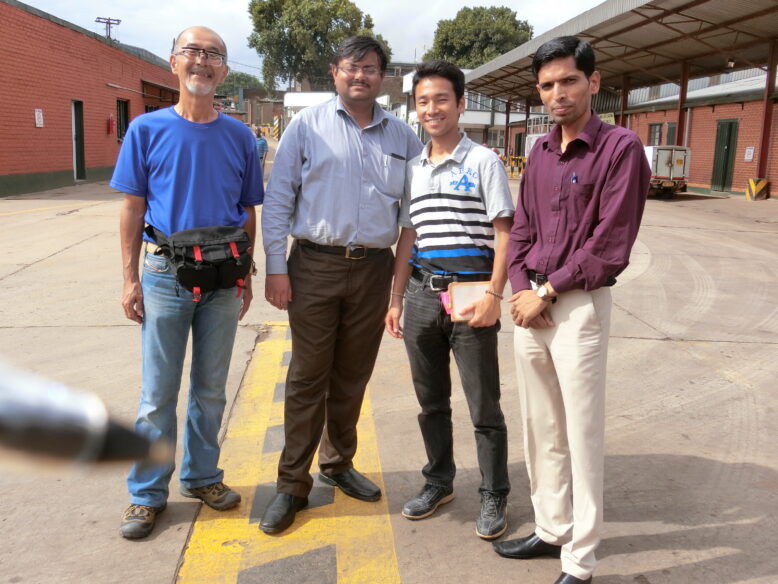
Seibo purchases the stock for school meals from a company called RAB Processor, which sells grains and the basic porridge known as Likuni Phala. The invoice amount is supported by funds from Japan. RAB Processor wholesales meals to various charities, including USAID, and Seibo is one of its clients.
About RAB Processor
Since 1983, this company has been dealing with maize, the largest crop in Malawi, and producing various products, fertilizers, and household goods. It all starts with maize, which supports local agriculture and people’s livelihoods. Our school meals contribute to the future of children.
The Likuni Phala produced here is handled by many groups and NGOs, including USAID and Mary’s Meals, and it enjoys a high level of trust. During the processing, vitamins and sugar are added according to strict standards set by the WFP, and the final product is carefully inspected by precise scanners to ensure safe and nutritious meals for children.

Seibo’s New School Meal Delivery Method
Until September 2023, Seibo had begun transporting and delivering Likuni Phala to schools through RAB Processor. Previously, RAB only delivered purchased Likuni Phala to Seibo’s office in Blantyre. However, they decided to directly deliver school meals to the schools through RAB Processor. This helps prevent theft during transportation and eliminates the risk of Likuni Phala loss during both transportation and delivery.

Additionally, by not needing to hire truck drivers in Blantyre or arrange trucks from Northern Mzimba to schools, the workload of staff is reduced. Furthermore, with the improvement in delivery efficiency, while the old system cost 2,500,000 Malawian Kwacha (MK) to transport and deliver 21 tons of Likuni Phala, the new system reduced the cost to 1,700,000 MK. This leads to approximately 800,000 MK in monthly savings, resulting in significant cost reduction.
[Column] Process of Making Phala
First, they procure maize and soybeans from contracted farmers. These farmers are traditionally chosen based on taste and quality.
Then, the maize and soybeans are cleaned, removing husks and other impurities, focusing on making them clean. Only high-quality grains are selected. Next, maize and soybeans are mixed and processed into flour. This mixture undergoes high heat and pressure from compressors to remove harmful substances, particularly coenzymes that may adversely affect the digestive system.
Afterward, the mixture is gradually cooled, and necessary nutrients and sugars are added according to the standards set by the WFP, ensuring its completion.



